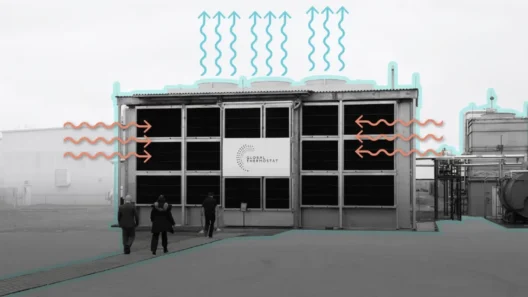Have you ever pondered how a simple tree, standing tall and unwavering, could wield such immense power against a calamity as colossal as global warming? In an era where climate change is at the forefront of global discussions, trees emerge as not just passive entities but as proactive guardians of our environment. These natural stalwarts, with their deep roots and expansive canopies, offer multifaceted solutions to mitigate the ravages of climate change. This exploration elucidates how trees, through their myriad roles and functions, become Nature’s climate warriors.
To truly understand the significance of trees in combating global warming, we must first explore their primary mechanism: carbon sequestration. Trees absorb carbon dioxide (CO2), a predominant greenhouse gas, during the process of photosynthesis. Remarkably, a mature tree can absorb approximately 48 pounds of CO2 annually. Over time, forests can store vast amounts of carbon in their biomass and soil, effectively reducing the concentration of this gas in the atmosphere. This process not only curtails global warming but also enhances air quality.
One may wonder: how can we optimize tree planting to maximize this carbon capture? The answer lies in diversity. Planting a variety of species can enhance resilience against diseases and pests while improving overall forest health. Moreover, native species are typically better suited for their environment, ensuring higher survival rates and more effective carbon storage. Conversely, monoculture plantations may offer short-term carbon sequestration benefits but lack the resilience required to combat longer-term climatic shifts.
Additionally, trees contribute to the cooling of the Earth’s surface through a phenomenon known as transpiration. This process involves trees absorbing water from the soil and releasing it into the atmosphere through tiny openings in their leaves. The result is a natural cooling effect, similar to how sweating cools the human body. In urban areas, where concrete landscapes dominate, trees can create microclimates, helping to lower urban heat levels. Planting trees in cities not only enhances the quality of life but also combats the urban heat island effect, wherein cities experience higher temperatures than their rural counterparts due to human activity.
But the role of trees extends beyond merely absorbing CO2 and providing cool shade. They play a pivotal part in the water cycle as well. Trees draw water from the ground and release it into the atmosphere, contributing to precipitation and maintaining local climates. Forests help stabilize watersheds, reducing soil erosion and preventing sedimentation in rivers, which can lead to flooding. As the climate becomes increasingly erratic, protecting existing forests and restoring degraded areas becomes a vital strategy for maintaining hydrological balance.
Now, considering the complex interplay between trees and the environment, how can we further elevate their role in the fight against global warming? The answer lies in conservation efforts. Deforestation, driven by agriculture, logging, and urbanization, releases stored carbon back into the atmosphere, exacerbating climate change. Hence, preserving existing forests and promoting sustainable land use practices are paramount. Efforts should also focus on reforestation and afforestation initiatives, which involve planting trees in deforested areas or in new areas that were not previously forested. Such strategies have the potential to significantly bolster carbon sinks, thereby serving as a robust countermeasure against climate change.
Moreover, trees offer a myriad of additional ecological benefits that contribute to our planet’s health. They are critical habitats for countless species, fostering biodiversity. A single tree can support dozens of insects, birds, and mammals, thereby maintaining the delicate balance of our ecosystems. By preserving and planting trees, we promote biodiversity, ensuring that entire ecosystems remain intact in the face of climate challenges.
As we delve deeper into the ecological benefits, one cannot overlook the socio-economic dimensions that trees encompass. Forests provide resources such as timber, pharmaceuticals, and food, supporting the livelihoods of millions globally. They also have cultural significance in many societies, acting as symbols of heritage and identity. In recognizing the multifaceted roles of trees, we begin to appreciate their contribution not only to ecological stability but also to economic resilience and cultural integrity.
Yet, a pressing challenge looms. With the escalating consequences of climate change, how can societies galvanize collective action to protect and promote the planting of trees? This invites a pivotal question: can individuals truly contribute meaningfully to reforestation efforts? The answer is a resounding yes. Grassroots movements, community tree-planting campaigns, and educational initiatives can significantly amplify the impact of tree planting and conservation. Encouragingly, many organizations and communities are already championing these causes, rallying citizens to plant trees in their neighborhoods, parks, and schools.
As we confront the ominous tide of climate change, we must acknowledge the crucial role trees play in our planetary health. Their ability to capture carbon, regulate temperatures, support biodiversity, and sustain communities cannot be overstated. Trees stand resilient against the adversities posed by climate change, embodying an age-old wisdom that connects us to the natural world. Embracing their power requires a concerted, collaborative approach, involving individuals, communities, and nations alike. So, how will you contribute to this green revolution? The power to effect change lies within our hands, and it begins with the simple act of planting a tree.








